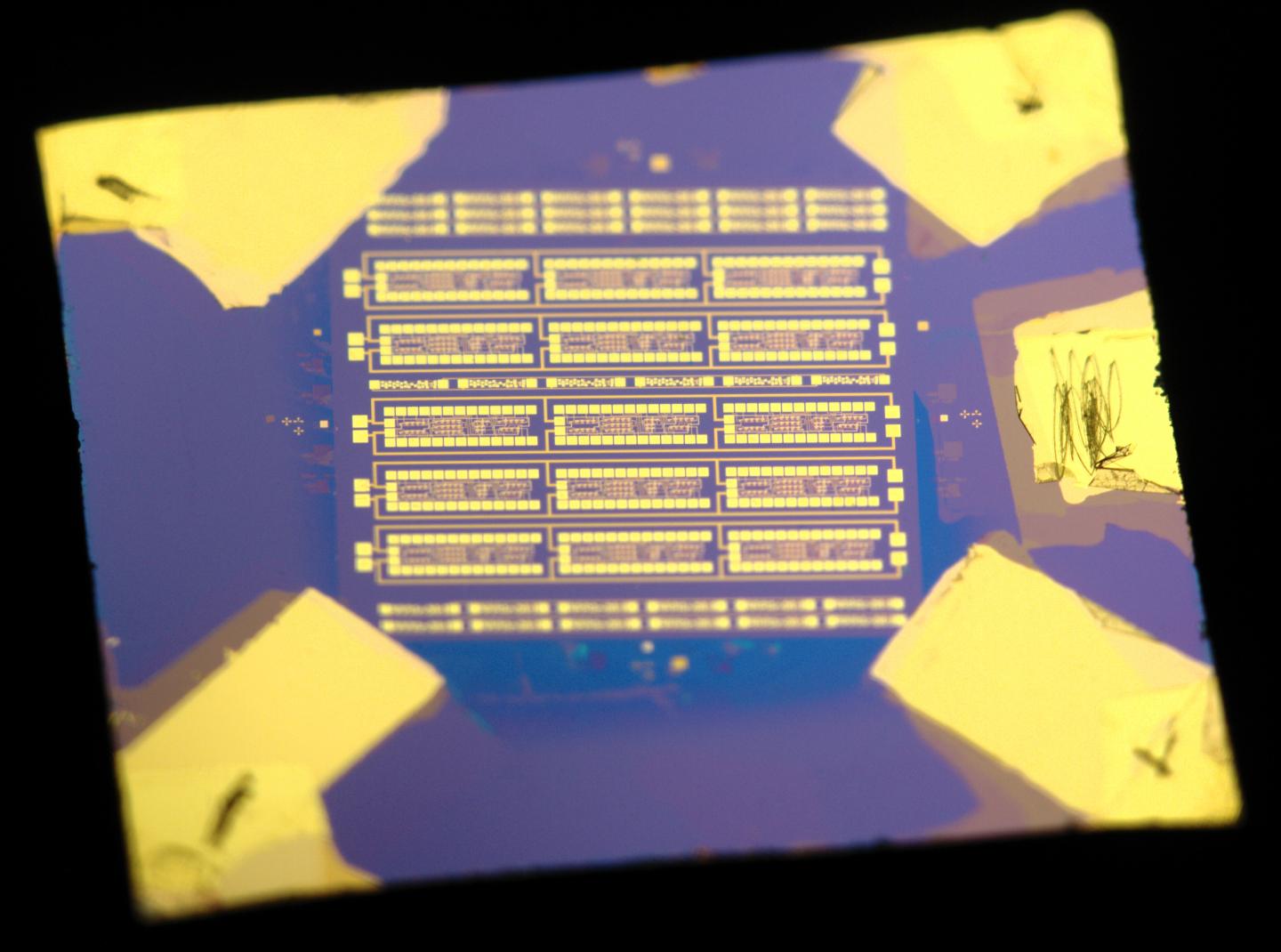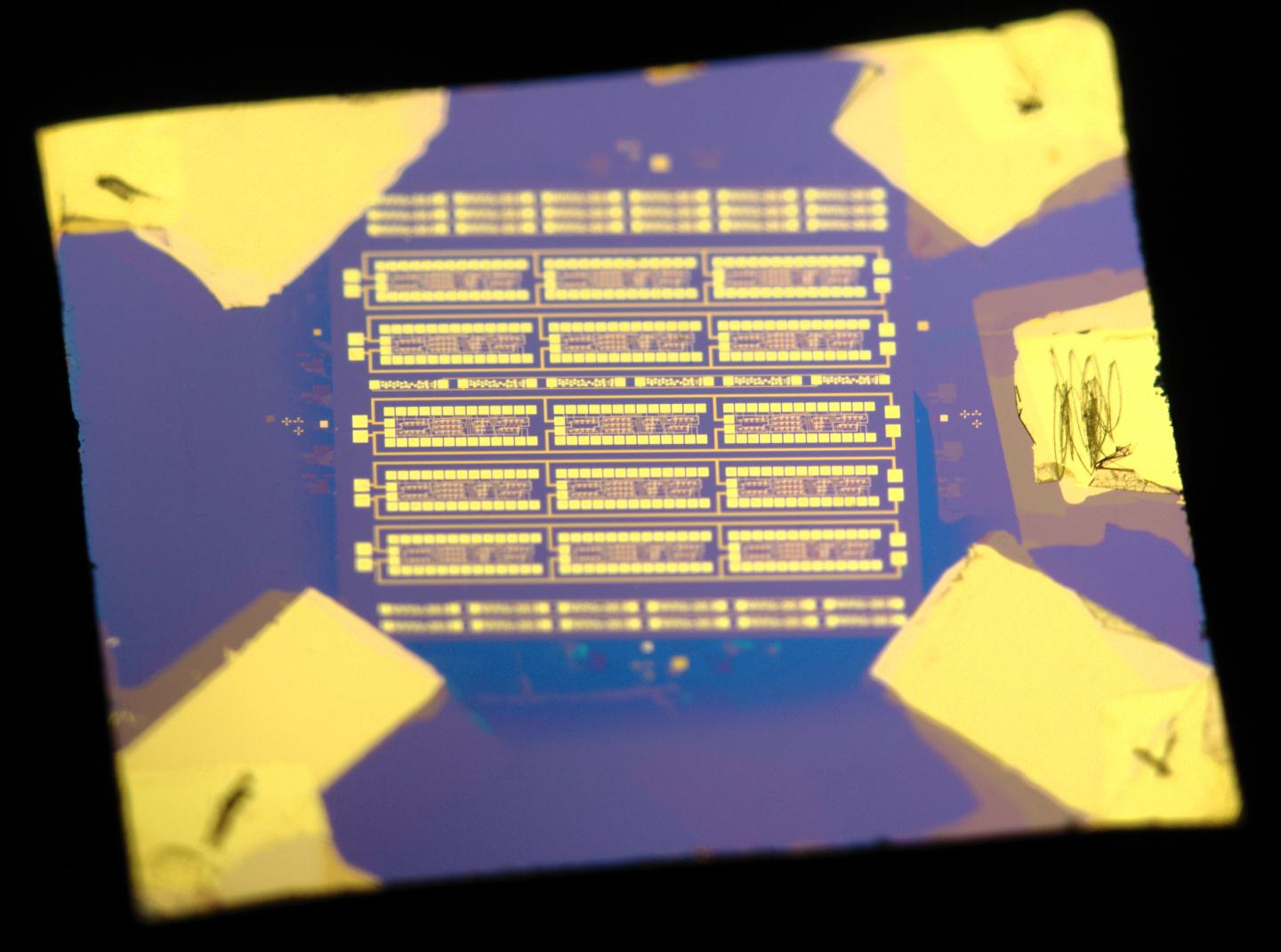
Credit: Hermann Detz, TU Vienna
The first fully functional microprocessor logic devices based on few-atom-thick layered materials have been demonstrated by researchers from the Graphene Flagship, working at TU Vienna in Austria. The processor chip consists of 115 integrated transistors and is a first step toward ultra-thin, flexible logic devices. Using transistors made from layers of molybdenum disulphide (MoS2), the microprocessors are capable of 1-bit logic operations and the design is scalable to multi-bit operations.
With the drive towards smart objects and the Internet of Things, the microprocessors hold promise for integrating computational power into everyday objects and surfaces. The research is published this week in Nature Communications.
The Graphene Flagship is developing novel technologies based on graphene and related materials (GRMs) such as transition metal dichalcogenides (TMDs) like MoS2, semiconductor materials that can be separated into ultra-thin sheets just a few atoms thick. GRMs are promising for compact and flexible electronic devices due to their thinness and excellent electrical properties.
The ultra-thin MoS2 transistors are inherently flexible and compact, so this result could be directly translated into microprocessors for fully flexible electronic devices, for example, wearable phones or computers, or for wider use in the Internet of Things. The MoS2 transistors are highly responsive, and could enable low-powered computers to be integrated into everyday objects without adding bulk. "In principle, it's an advantage to have a thin material for a transistor. The thinner the material, the better the electrostatic control of the transistor channel, and the smaller the power consumption," said Thomas Mueller (TU Vienna), who led the work.
Mueller added "In general, being a flexible material there are new opportunities for novel applications. One could combine these processor circuits with light emitters that could also be made with MoS2 to make flexible displays and e-paper, or integrate them for logic circuits in smart sensors. Our goal is to realise significantly larger circuits that can do much more in terms of useful operations. We want to make a full 8-bit design – or even more bits – on a single chip with smaller feature sizes."
Talking about increasing the computing power, Stefan Wachter (TU Vienna), first author of the work, said "Adding additional bits of course makes everything much more complicated. For example, adding just one bit will roughly double the complexity of the circuit."
Compared to modern processors, which can have billions of transistors in a single chip, the 115-transistor devices are very simple. However, it is a very early stage for a new technology, and the team have concrete plans for the next steps: "Our approach is to improve the processing to a point where we can reliably make chips with a few tens of thousands of transistors. For example, growing directly onto the chip would avoid the transfer process, which would give higher yield so that we can go to more complex circuits," said Dmitry Polyushkin (TU Vienna), an author of the work.
###
Media Contact
Sophia Lloyd
[email protected]
01-223-762-418
@GrapheneCA
http://graphene-flagship.eu
############
Story Source: Materials provided by Scienmag





